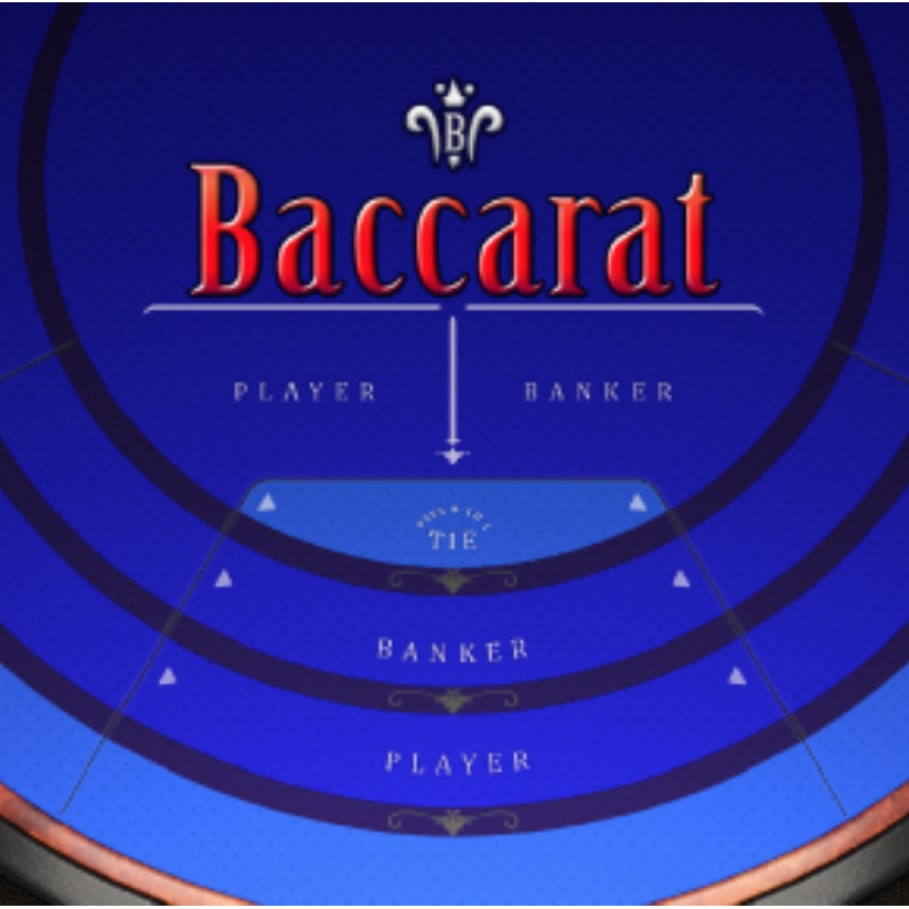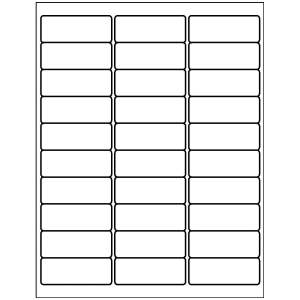Downloads ChromeDriver Chrome for Developers
Stay organized with collections Save and categorize content based on your preferences.
Current Releases Warning:- If you are using Chrome version 115 or newer, consult the Chrome for Testing availability dashboard. This page provides convenient JSON endpoints for specific ChromeDriver version downloading.
For lower versions of Chrome, see below for the version of ChromeDriver that supports it. For more information on selecting the right version of ChromeDriver, see the Version Selection page.
ChromeDriver 114.0.5735.90 Supports Chrome version 114
For more details, see the release notes.
ChromeDriver 114.0.5735.16 Supports Chrome version 114
For more details, see the release notes.
ChromeDriver 113.0.5672.63 Supports Chrome version 113
Resolved issue 4205: Same object ids in Classic and BiDi Pri-1 Resolved issue 4302: Don’t assume that Mapper is in the first tab in ExecuteGetWindowHandles Pri-1 Resolved issue 4356: Chrome 110 not utilizing pref value “download.default_directory” Pri-1 For more details, see the release notes.
ChromeDriver 113.0.5672.24 Supports Chrome version 113
Resolved issue 4205: Same object ids in Classic and BiDi Pri-1 Resolved issue 4302: Don’t assume that Mapper is in the first tab in ExecuteGetWindowHandles Pri-1 Resolved issue 4356: Chrome 110 not utilizing pref value “download.default_directory” Pri-1 For more details, see the release notes.
ChromeDriver 112.0.5615.49 Supports Chrome version 112
Resolved issue 3517: Enable print feature for non-headless Pri- Resolved issue 4419: Large overhead on Speedometer when using chromedriver Pri-3 For more details, see the release notes.
ChromeDriver 112.0.5615.28 Supports Chrome version 112
Resolved issue 4357: Chromedriver version 110.0.5481.77 session issue with –headless and –user-data-dir options. Pri-1 For more details, see the release notes.
ChromeDriver 111.0.5563.64 Supports Chrome version 111
Resolved issue 4216: Run ChromeDriver with custom BiDiMapper Pri- Resolved issue 4300: Window handle is interoperable between Classic and BiDi Pri- Resolved issue 4325: Handling of toJSON in jsonSerialize of call_function.js deviates from the standard. Pri- Resolved issue 4330: DCHECK fails at DevToolsClientImpl::AddListener Pri- Resolved issue 4357: ChromeDriver session issue with –headless and –user-data-dir options Pri-1 For more details, see the release notes.
ChromeDriver 111.0.5563.41 Supports Chrome version 111
Resolved issue 4357: ChromeDriver session issue with –headless and –user-data-dir options Pri-1 For more details, see the release notes.
ChromeDriver 111.0.5563.19 Supports Chrome version 111
Resolved issue 4216: Run ChromeDriver with custom BiDiMapper Pri- Resolved issue 4300: Window handle is interoperable between Classic and BiDi Pri- Resolved issue 4325: Handling of toJSON in jsonSerialize of call_function.js deviates from the standard. Pri- Resolved issue 4330: DCHECK fails at DevToolsClientImpl::AddListener Pri- For more details, see the release notes.
ChromeDriver 110.0.5481.77 Supports Chrome version 110
Resolved issue 4193: Failed to start new session on Android 13 Pri- Resolved issue 4272: WebSocket should treat code=0 as an indication of FIN Pri- Resolved issue 4276: Fix connectivity issues in ChromeDriver Pri- Resolved issue 4295: ChromeDriver with “webSocketUrl”: true is racy Pri- Resolved issue 4297: ChromeDriver Bidi serializes incorrectly Pri- For more details, see the release notes.
ChromeDriver 110.0.5481.30 Supports Chrome version 110
Resolved issue 4193: Failed to start new session on Android 13 Pri- Resolved issue 4272: WebSocket should treat code=0 as an indication of FIN Pri- Resolved issue 4276: Fix connectivity issues in ChromeDriver Pri- Resolved issue 4295: ChromeDriver with “webSocketUrl”: true is racy Pri- Resolved issue 4297: ChromeDriver Bidi serializes incorrectly Pri- For more details, see the release notes.
ChromeDriver 109.0.5414.74 Supports Chrome version 109
Resolved issue 4179: BiDi session must support multiple connections Pri- Resolved issue 4203: Improve credits information Pri- Resolved issue 4263: Crash on Meta+A Pri- For more details, see the release notes.
ChromeDriver 109.0.5414.25 Supports Chrome version 109
Resolved issue 4179: BiDi session must support multiple connections Pri- Resolved issue 4203: Improve credits information Pri- Resolved issue 4263: Crash on Meta+A Pri- For more details, see the release notes.
ChromeDriver 108.0.5359.71 Supports Chrome version 108 For more details, see the release notes.
ChromeDriver 108.0.5359.22 Supports Chrome version 108
Resolved issue 4204: Fix the failing WPT test_top_level_and_one_child Pri- Resolved issue 4215: Rename chromedriver_mac64_m1 build to chromedriver_mac_arm64 Pri- Resolved issue 4221: Crash when a click command closes the browser Pri- For more details, see the release notes.
ChromeDriver 107.0.5304.62 Supports Chrome version 107
For more details, see the release notes.
ChromeDriver 107.0.5304.18 Supports Chrome version 107
Resolved issue 4180: Prohibit any BiDi commands handling until notified that BiDiMapper has started Pri- Resolved issue 4198: ChromeDriver BiDi should not assume that BiDiMapper is always in the first tab Pri- Resolved issue 4207: WebDriver error when running WPT Pri-1 For more details, see the release notes.
ChromeDriver 106.0.5249.61 Supports Chrome version 106
For more details, see the release notes.
ChromeDriver 106.0.5249.21 Supports Chrome version 106
Resolved issue 4016: Add basic BiDi support to ChromeDriver (Mapper based) Pri-1 For more details, see the release notes.
ChromeDriver 105.0.5195.52 Supports Chrome version 105
For more details, see the release notes.
ChromeDriver 105.0.5195.19 Supports Chrome version
For more details, see the release notes.
ChromeDriver 104.0.5112.79 Supports Chrome version 104
For more details, see the release notes.
ChromeDriver 104.0.5112.29 Supports Chrome version 104
Resolved issue 4121: WebDriver command sometimes fails with “unexpected command response” Pri-1 For more details, see the release notes.
ChromeDriver 104.0.5112.20 Supports Chrome version 104
Resolved issue 4121: WebDriver command sometimes fails with “unexpected command response” Pri-1 For more details, see the release notes.
ChromeDriver 103.0.5060.134 Supports Chrome version 103
Resolved issue 4048: target frame detached Pri- Resolved issue 4121: WebDriver command sometimes fails with “unexpected command response” Pri-1 For more details, see the release notes.
ChromeDriver 103.0.5060.53 Supports Chrome version 103
Resolved issue 4048: target frame detached Pri- For more details, see the release notes.
ChromeDriver 103.0.5060.24 Supports Chrome version 103
For more details, see the release notes.
ChromeDriver 102.0.5005.61 Supports Chrome version 102
Resolved issue 1309282: chromedriver does not support multivalued switches Pri-1 For more details, see the release notes.
ChromeDriver 102.0.5005.27 Supports Chrome version 102
Resolved issue 1309282: chromedriver does not support multivalued switches Pri-1 For more details, see the release notes.
ChromeDriver 101.0.4951.41 Supports Chrome version 101
Resolved issue 4046: DCHECK hit when appending empty fenced frame Pri- Resolved issue 4080: Switching to nested frame fails Pri- For more details, see the release notes.
ChromeDriver 101.0.4951.15 Supports Chrome version 101
Resolved issue 4046: DCHECK hit when appending empty fenced frame Pri- Resolved issue 4080: Switching to nested frame fails Pri- For more details, see the release notes.
ChromeDriver 100.0.4896.60 Supports Chrome version 100
Resolved issue 4002: Support Fenced Frames Pri- For more details, see the release notes.
ChromeDriver 100.0.4896.20 Supports Chrome version 100
Resolved issue 4002: Support Fenced Frames Pri- For more details, see the release notes.
ChromeDriver 99.0.4844.51 Supports Chrome version 99
For more details, see the release notes.
ChromeDriver 99.0.4844.35 Supports Chrome version 99
REVERTED!!! Resolved issue 2269: Impossible to use non-BMP characters (code points above U+FFFF) Pri-3 Resolved issue chromium:1295243: Regression in ChromeDriver sendKeys Pri-1 For more details, see the release notes.
ChromeDriver 99.0.4844.17 Supports Chrome version 99
For more details, see the release notes.
ChromeDriver 98.0.4758.102 Supports Chrome version 98
Resolved issue 3933: Click at edge of viewport is ineffective without error Pri- REVERTED!!! Resolved issue 2269: Impossible to use non-BMP characters (code points above U+FFFF) Pri-3 Resolved issue chromium:1295243: Regression in ChromeDriver sendKeys Pri-1 For more details, see the release notes.
ChromeDriver 98.0.4758.80 Supports Chrome version 98
Resolved issue 3933: Click at edge of viewport is ineffective without error Pri- Resolved issue 2269: Impossible to use non-BMP characters (code points above U+FFFF) Pri-3 For more details, see the release notes.
ChromeDriver 98.0.4758.48 Supports Chrome version 98
Resolved issue 3933: Click at edge of viewport is ineffective without error Pri- Resolved issue 2269: Impossible to use non-BMP characters (code points above U+FFFF) Pri-3 For more details, see the release notes.
ChromeDriver 97.0.4692.71 Supports Chrome version 97
Resolved issue 3878: Better handling of fractional element coordinates for element click Pri- For more details, see the release notes.
ChromeDriver 97.0.4692.36 Supports Chrome version 97
Resolved issue 3878: Better handling of fractional element coordinates for element click Pri- For more details, see the release notes.
ChromeDriver 97.0.4692.20 Supports Chrome version 97
Resolved issue 3878: Better handling of fractional element coordinates for element click Pri- For more details, see the release notes.
ChromeDriver 96.0.4664.45 Supports Chrome version 96
Resolved issue 3445: Impossible to access elements in iframe inside a shadow root Pri-3 For more details, see the release notes.
ChromeDriver 96.0.4664.35 Supports Chrome version 96
Resolved issue 3445: Impossible to access elements in iframe inside a shadow root Pri-3 For more details, see the release notes.
ChromeDriver 96.0.4664.18 Supports Chrome version 96
Resolved issue 3445: Impossible to access elements in iframe inside a shadow root Pri-3 For more details, see the release notes.
ChromeDriver 95.0.4638.69 Supports Chrome version 95
Resolved issue 3857: Host header or origin header is specified and is not whitelisted or localhost Pri-1 Added –allowed-origins argument For more details, see the release notes.
ChromeDriver 95.0.4638.54 Supports Chrome version 95
Resolved issue 3857: Host header or origin header is specified and is not whitelisted or localhost Pri-1 Added –allowed-origins argument For more details, see the release notes.
ChromeDriver 95.0.4638.17 Supports Chrome version 95
Resolved issue 3857: Host header or origin header is specified and is not whitelisted or localhost Pri-1 Added –allowed-origins argument For more details, see the release notes.
ChromeDriver 95.0.4638.10 Supports Chrome version 95
Resolved issue 3857: Host header or origin header is specified and is not whitelisted or localhost Pri-1 Added –allowed-origins argument For more details, see the release notes.
ChromeDriver 94.0.4606.113 Supports Chrome version 94
For more details, see the release notes.
ChromeDriver 94.0.4606.61 Supports Chrome version 94
For more details, see the release notes.
ChromeDriver 94.0.4606.41 Supports Chrome version 94
For more details, see the release notes.
ChromeDriver 93.0.4577.63 Supports Chrome version 93
For more details, see the release notes.
ChromeDriver 93.0.4577.15 Supports Chrome version 93
For more details, see the release notes.
ChromeDriver 92.0.4515.107 Supports Chrome version 92
For more details, see the release notes.
ChromeDriver 92.0.4515.43 Supports Chrome version 92
Resolved issue 3389: Host validation for ChromeDriver requests For more details, see the release notes.
ChromeDriver 91.0.4472.101 Supports Chrome version 91
Resolved issue 1205107: Unable to get attribute value for fields on the web application. For more details, see the release notes.
ChromeDriver 91.0.4472.19 Supports Chrome version 91
Resolved issue 3744: SendKeys() and Click() silently fail after link navigation Resolved issue 3746: attribute endpoint incorrectly updates values For more details, see the release notes.
ChromeDriver 90.0.4430.24 Supports Chrome version 90
Resolved issue 3708: GetElementLocation’s inView fails for elements in shadow DOM Resolved issue 3721: Collect performance log for service worker when enabled Resolved issue 3731: AdbImpl::GetPidByName does not work correctly on non-standard Android OS’s like on OnePlus Resolved issue 3733: Catastrophic failure with domain on localhost Resolved issue 3734: Driver should Error Attempting to set Cookie on Wrong Domain Resolved issue 3743: Refactor call function and fix remove element issue For more details, see the release notes.
ChromeDriver 89.0.4389.23 Supports Chrome version 89
Resolved issue 3667: Timed out receiving a message from renderer Resolved issue 3675: GetElementLocation uses inView method which mishandles boolean as array Resolved issue 3682: GetElementRegion returns incorrect size for elements which are partially out of viewport Resolved issue 3690: ChromeDriver fails if extensions use chrome.windows API For more details, see the release notes.
ChromeDriver 88.0.4324.96 Supports Chrome version 88
Resolved issue 3641: Page not getting loaded/rendered when browser window is not in focus with Chrome Beta v87 and chromedriver v(87/86) For more details, see the release notes.
ChromeDriver 88.0.4324.27 Supports Chrome version 88
Resolved issue 3611: getText() output in protractor different from <element>.innerText Resolved issue 3625: Improve element screenshot compatibility Resolved issue 3628: Stale Element Reference and wrong URL reported back with URL having another URL as part of its path Resolved issue 3631: Add support for the webauthn:extension:largeBlob capability Resolved issue 3635: Chromedriver 86 - chromedriver.quit() doesn’t seem to pass unload event properly Resolved issue 3649: Copying selected text to clipboard does not work on Windows 10 when using headless mode For more details, see the release notes.
ChromeDriver 87.0.4280.88 Supports Chrome version 87
Resolved issue 3641: Page not getting loaded/rendered when browser window is not in focus with Chrome Beta v87 and chromedriver v(87/86) Resolved issue 3657: Screenshot background browser timed out For more details, see the release notes.
ChromeDriver 87.0.4280.20 Supports Chrome version 87
Resolved issue 2421: Delete old port-forwarding channels on android adb-server Resolved issue 3474: Emulated mobile device list needs updating Resolved issue 3507: Implement “get computed role” Resolved issue 3508: Implement “get computed label” Resolved issue 3584: Rename ChromeDriver command line option –whitelisted-ips Resolved issue 3588: Bidi WebSocket connection Resolved issue 3594: Navigation completes prematurely if OOPIF loads before main page Resolved issue 3598: A command line option for devtools port to be forwarded to webview_devtools_remote socket Resolved issue 3608: Chromedriver debuggerAddress does not support ipv6 For more details, see the release notes.
ChromeDriver 86.0.4240.22 Supports Chrome version 86
Resolved issue 3370: Shut down Chrome gracefully or cookie will not be correctly saved to SQLite persistence file Resolved issue 3401: Get Element Location JS does not locate the visible center of the element Resolved issue 3462: For sendKeys, CMD key don’t work for MAC Resolved issue 3541: Improve log between Client and ChromeDriver Resolved issue 3559: Output Chrome version when ChromeDriver reports incompatible For more details, see the release notes.
ChromeDriver 85.0.4183.87 Supports Chrome version 85
Resolved issue 3578: Chrome 85 no longer allows graceful interaction with windows when an alert dialog is open For more details, see the release notes.
ChromeDriver 85.0.4183.83 Supports Chrome version 85
Resolved issue 3577: ChromeDriver 85 does not detect changed Chrome directory (C:\Program Files) For more details, see the release notes.
ChromeDriver 85.0.4183.38 Supports Chrome version 85
Resolved issue 3214: ChromeDriver78: Sendkeys resets text selection with contenteditable Resolved issue 3376: Remove LaunchApp command from ChromeDriver Resolved issue 3432: Sometimes NavigationTracker fails to detect when the page has finished loading Resolved issue 3481: New Print endpoint according to w3c spec Resolved issue 3488: driver.get doesn’t throw error when proxy is wrong configured Resolved issue 3502: Use document.hasFocus() to check if element is focused Resolved issue 3515: selenium.common.exceptions.WebDriverException: Message: unknown error: bad inspector message For more details, see the release notes.
ChromeDriver 84.0.4147.30 Supports Chrome version 84
Resolved issue 3420: after switching to the print window, the chromedriver stops responding Resolved issue 3421: Driver returns Cyrillic text without styles Resolved issue 3422: GetElementText breaks with prototype 1.6.0.3 Resolved issue 3434: Cannot get ‘assert’ messages from the ‘browser’ logs For more details, see the release notes.
ChromeDriver 83.0.4103.39 Supports Chrome version 83
Updated Chromedriver to work correctly with prototype.js. For more details, see the release notes.
ChromeDriver 83.0.4103.14 Supports Chrome version 83
Resolved issue 1778: Deprecate launchApp from ChromeDriver Resolved issue 2520: InitSession can wait forever when Chrome is unresponsive Resolved issue 3120: Headless mode download from new tab Resolved issue 3234: Confirm semicolon found before substring Resolved issue 3240: ExecuteGetElementRect does not check returned status from GET_SIZE Resolved issue 3331: The get_cookies() method is returning ’expiry’ keys of type double, but should be int64 in w3c mode Resolved issue 3332: Retry timeout logged as severe Resolved issue 3339: Chromedriver exited unexpectedly with code null, signal SIGTRAP Resolved issue 3351: Improve Security Considerations message Resolved issue 3352: Support SendKeys for color elements Resolved issue 3353: Wait for Pending Navigation continues after frame context destroyed Resolved issue 3375: Chromedriver v80 hangs on getPageSource on some sites Resolved issue 3383: ChromeDriver 80+ on Windows seems to exit or stall on certain element or click commands Resolved issue 3399: Remove wasThrown check ChromeDriver 81.0.4044.138 Supports Chrome version 81
Updated Chromedriver to work correctly with prototype.js. For more details, see the release notes.
ChromeDriver 81.0.4044.69 Supports Chrome version 81
Fixed: Chromedriver crashes on getPageSource on some sites.
Fixed: ChromeDriver crashes on certain element or click commands.
For more details, see the release notes.
ChromeDriver 81.0.4044.20 Supports Chrome version 81
Fixed error when attempting to get location of html element.
Get and Add Cookie commands are now frame specific.
Resolved some issues that occur with sites that redefine standard Javascript objects.
ChromeDriver will continue to wait for loading to complete after receiving a Target Closed message.
Chromedriver now returns spec compliant error code for timeouts
Fixed: ChromeDriver Unexpected Slow response time on NewSession Command.
User-defined timeouts of over 10 minutes are now supported.
Fixed: ChromeDriver unable to connect to DevTools due to IPv4 vs IPv6 mismatch.
Restored search order for Chrome binary on Linux.
For more details, see the release notes.
ChromeDriver 80.0.3987.106 Supports Chrome version 80
Restored search order for Chrome binary on Linux For more details, see the release notes.
ChromeDriver 80.0.3987.16 Supports Chrome version 80
Fixed Load page was aborted when using a proxy. Chromedriver now waits for Current frame to load. ChromeDriver log will include the port used by the driver. Enabled SetGeoLocation for w3c mode. Added missing Alert text for UnexpectedAlertOpen status. Improved message when CRX2 Extension is loaded. Fixed a potential race condition in ExecuteGetPageSource. ChromeDriver will add –ignore-certificate-errors flag when acceptInsecureCerts capability is true Updated the error message and return status for no such execution context Fixed: ChromeDriver may block indefinitely while waiting for pending navigation. Added SameSite attribute to AddCookie and GetCookie. For more details, see the release notes.
ChromeDriver 79.0.3945.36 Supports Chrome version 79
Includes the following change over version 79.0.3945.16:
Fixed incorrect calculation of element coordinates For more details, see the release notes.
ChromeDriver 79.0.3945.16 Supports Chrome version 79
Fixed ChromeDriver crash caused by javascript alert fired during command execution
Fixed a bug causing Chromedriver to lock when an alert is fired while taking a screenshot
Removed –ignore-certificate-errors from Chrome launch command
Changed platform and platformName to windows on Win10
Fixed undefined window.navigator.webdriver when “enable-automation” is excluded
Fixed WPT test “test_not_editable_inputshidden”
Fixed “Element is not clickable” when using headless mode
For more details, see the release notes.
ChromeDriver 78.0.3904.105 Supports Chrome version 78
Includes the following change over version 78.0.3904.70: * Fixed incorrect calculation of element coordinates
For more details, see the release notes.
ChromeDriver 78.0.3904.70 Supports Chrome version 78
Includes the following change over version 78.0.3904.11:
Reverted the change to adjust screeshot size on retina display, due to multiple issues reported For more details, see the release notes.
ChromeDriver 78.0.3904.11 Supports Chrome version 78
Fixed several issues in JavaScript object serialization
Fixed a bug in capability matching for Chrome on Android
Implemented permissions automation
Fixed screenshot size on retina display
Fixed page load timeout in some scenarios
Improved platformName capability matching
Fixed error code returned while moving pointer to drop-down list options
Fixed an issue affecting download in headless mode
For more details, see the release notes.
ChromeDriver 77.0.3865.40 Supports Chrome version 77
Includes the following changes over version 77.0.3865.10:
Fixed two bugs in serializing and deserializing JavaScript objects Fixed handling of platformName: android while matching capabilities For more details, see the release notes.
ChromeDriver 77.0.3865.10 Supports Chrome version 77
Fixed several issues in the implementation of Actions API
Improved JavaScript code execution and result handling
Fixed a bug that incorrectly rejected POST requests with empty body in OSS mode
A more robust navigation tracker
Support eager page load strategy
Added New Window command from W3C WebDriver spec
Support to save file downloads in headless mode
Added support for loading CRX3 extensions
For more details, see the release notes.
ChromeDriver 76.0.3809.126 Supports Chrome version 76
Includes the following changes over version 76.0.3809.68:
Fixed two bugs in serializing and deserializing JavaScript objects For more details, see the release notes.
ChromeDriver 76.0.3809.68 Supports Chrome version 76
Includes the following changes over version 76.0.3809.25:
Fixed a bug in detecting circular reference in JavaScript objects
Fixed a bug that causes ChromeDriver to crash when certain types of JavaScript errors occur
Fixed a bug that prevents actions API to interact with elements inside shadow DOMs
Fixed a bug in keeping track of modifier key state between actions API commands
Fixed a bug in keeping track of pointer locations between actions API commands
Save “Cannot call non W3C standard command while in W3C mode” error to log file when it occurs
For more details, see the release notes.
ChromeDriver 76.0.3809.25 Supports Chrome version 76
Includes the following changes over version 76.0.3809.12:
Fixed a bug that incorrectly rejected POST requests with empty body in OSS mode
Added new endpoints for retrieving Chrome log
Added endpoint for Is Displayed command in W3C mode
For more details, see the release notes.
ChromeDriver 76.0.3809.12 Supports Chrome version 76
Finished implementation of Actions API
Improved spec compliance of script timeout handling
Improved serialization of results from Execute Script command
Fixed issues in scrolling element into view
Added handling of Cancel key defined in WebDriver spec
Fixed processing of unhandled alert error response
Fixed processing of <details> element
Updated excludeSwitches option to allow optional leading dashes in switch names
For more details, see the release notes.
ChromeDriver 75.0.3770.140 Supports Chrome version 75
Includes the following changes over version 75.0.3770.90:
Fixed a bug that caused ChromeDriver to crash when some types of JavaScript error occurs Fixed a bug in preserving modifier key state between actions For more details, see the release notes.
ChromeDriver 75.0.3770.90 Supports Chrome version 75
Includes the following changes over version 75.0.3770.8:
Fixed a bug that incorrectly rejected POST requests with empty body in OSS mode Added new endpoints for retrieving Chrome log For more details, see the release notes.
ChromeDriver 75.0.3770.8 Supports Chrome version 75
The most noticeable change is ChromeDriver now runs in W3C standard compliant mode by default. Other changes include:
Fixed a bug that caused blur event to be raised twice during element clear
Renamed capability loggingPrefs to goog:loggingPrefs, as required by W3C standard
Fixed error handling in W3C mode
Correct handling of creating cookies without leading dot in the domain name
Allows null for script timeout
Fixed Element Send Keys command to file input with ‘multiple’ attribute
Fixed Get Active Element command to return “no such element” error when no active element exists
Fixed navigation to malformed URL to return “invalid argument” error
Fixed HTTP status code when invalid session id is received
Fixed error response when input parameter is missing or malformed
Fixed Execute Script command to handle line-oriented JavaScript comment
For more details, see the release notes.
ChromeDriver 74.0.3729.6 Supports Chrome version 74
Fixed a bug that generated unexpected debug.log file on Windows Fixed mouse clicking and drag / drop inside SVG document Added cache-control header in responses from ChromeDriver Fixed the type of error when click is intercepted by a different element Fixed a bug that caused ChromeDriver to fail on Linux devices without /dev/shm Fixed some types of double click events Fixed Get Sessions command Fixed error checking in Switch To Frame command Fixed Get Page Source command For more details, see the release notes.
ChromeDriver 73.0.3683.68 Supports Chrome version 73
Fixed a bug that generated unexpected debug.log file on Windows
Fixed error code returned from Execute Script command in some scenarios
Added cache-control header in responses from ChromeDriver
Made the HTTP server keep connection alive by default
Fixed Close Window command to correctly handle user prompts
Fixed error code returned while sending keys to disabled element
Improved spec compliance of timeout value handling
Improved spec compliance of Add Cookie command
Increased HTTP server listening queue length
Fixed Is Element Displayed command in v0 shadow DOM
Added warning about Element Clear command behavior change in log file
Fixed Execute Script command to correctly convert document.all into JSON format
Improved handling of bad element reference
For more details, see the release notes.
ChromeDriver 2.46 Supports Chrome v71-73
Fixed error code returned from Execute Script command in some scenarios Made the HTTP server keep connection alive by default Fixed Close Window command to correctly handle user prompts Fixed error code returned while sending keys to disabled element Improved spec compliance of timeout value handling Improved spec compliance of Add Cookie command Improved spec compliance of Switch to Frame command Increased HTTP server listening queue length Fixed Is Element Displayed command in v0 shadow DOM Fixed Element Double Click command Added warning about Element Clear command behavior change in log file Fixed Execute Script command to correctly convert document.all into JSON format Improved handling of bad element reference For more details, see the release notes.
ChromeDriver 2.45 Supports Chrome v70-72
Fixed New Session is not spec compliant Fixed ChromeDriver shouldn’t launch Chrome if Chrome and ChromeDriver versions are incompatible Fixed Find Element command returns wrong error code when an invalid locator is used Fixed Some ChromeDriver status codes are wrong Fixed Compile error in JS inside of WebViewImpl::DispatchTouchEventsForMouseEvents Fixed Window size commands should handle user prompts Fixed ChromeDriver doesn’t start Chrome correctly with Chrome option “user-data-dir=” Fixed Status command is not spec compliant Fixed Add support for strictFileInteractability ChromeDriver 2.44 Supports Chrome v69-71
Fixed WindowMaximize on Mac Fixed Incorrect ‘alert open error’ for window handle call Fixed Element Send Keys should get “text” property in W3C mode Fixed XML special case of Is Element Enabled is not handled as per spec Fixed XML special case of Get Element CSS Value is not handled as per spec Fixed Set Window Rect needs to check for invalid input Fixed Support new unhandledPromptBehavior modes ChromeDriver 2.43 Supports Chrome v69-71
Changes include:
Fixed Parsing of proxy configuration is not standard compliant Fixed Launch app command is flaky Fixed Screenshot of element inside iFrame is taken incorrectly Added ChromeDriver supports window resizing over a remote connection Fixed Error codes are not handled in Clear element Fixed Not waiting until element is visible Fixed Get element property is not implemented Fixed Switch to Frame is not spec compliant Fixed Execute Async Script does not return spec compliant error codes Fixed Execute Script does not return spec compliant error codes Fixed Error code in ExecuteGet is not conformant with spec Fixed Send Alert Text is not returning spec compliant error codes Fixed clear() on an input type=“date” pretends element is not user-editable Fixed Chromedriver gets window handle for the tab which is opened manually Fixed Allow append or start a new log file for chromedriver Fixed New Session does not invoke w3c mode if flag is in firstMatch ChromeDriver 2.42 Supports Chrome v68-70
Changes include:
Fixed ClickEelement in Mobile Emulation Fixed whitelisted IPs with IPv4 Fixed starting ChromeDriver with whitelisted-ips flag on Mac OS Fixed SetTimeout to accept both pre-W3C and W3C formats Fixed take element screenshot Fixed ChromeDriver is looking for Chrome binaries in a system PATH as well Fixed Maximize window and Full Screen Implemented log-replay feature. ( Does not work for Android and Remote Browser yet ) Fixed some error codes were not compliant to W3C standard Fixed console.log with multiple arguments not handled properly Fixed GetElementRect should allow doubles Fixed touch emulation ChromeDriver 2.41 Supports Chrome v67-69
Changes include:
Fixed issue when ChromeDriver runs with “whitelisted-ips” option Remote Debugging Port is returned in capabilities Implemented getting window size on Android Desktop Chrome launch error messages are improved ChromeDriver fails fast when unable to start Chrome binaries Close Window return value conforms with spec Warning:- If you are using Chrome version 115 or newer, consult the Chrome for Testing availability dashboard. This page provides convenient JSON endpoints for specific ChromeDriver version downloading.
For lower versions of Chrome, see below for the version of ChromeDriver that supports it. For more information on selecting the right version of ChromeDriver, see the Version Selection page.
ChromeDriver 114.0.5735.90 Supports Chrome version 114
For more details, see the release notes.
ChromeDriver 114.0.5735.16 Supports Chrome version 114
For more details, see the release notes.
ChromeDriver 113.0.5672.63 Supports Chrome version 113
Resolved issue 4205: Same object ids in Classic and BiDi Pri-1 Resolved issue 4302: Don’t assume that Mapper is in the first tab in ExecuteGetWindowHandles Pri-1 Resolved issue 4356: Chrome 110 not utilizing pref value “download.default_directory” Pri-1 For more details, see the release notes.
ChromeDriver 113.0.5672.24 Supports Chrome version 113
Resolved issue 4205: Same object ids in Classic and BiDi Pri-1 Resolved issue 4302: Don’t assume that Mapper is in the first tab in ExecuteGetWindowHandles Pri-1 Resolved issue 4356: Chrome 110 not utilizing pref value “download.default_directory” Pri-1 For more details, see the release notes.
ChromeDriver 112.0.5615.49 Supports Chrome version 112
Resolved issue 3517: Enable print feature for non-headless Pri- Resolved issue 4419: Large overhead on Speedometer when using chromedriver Pri-3 For more details, see the release notes.
ChromeDriver 112.0.5615.28 Supports Chrome version 112
Resolved issue 4357: Chromedriver version 110.0.5481.77 session issue with –headless and –user-data-dir options. Pri-1 For more details, see the release notes.
ChromeDriver 111.0.5563.64 Supports Chrome version 111
Resolved issue 4216: Run ChromeDriver with custom BiDiMapper Pri- Resolved issue 4300: Window handle is interoperable between Classic and BiDi Pri- Resolved issue 4325: Handling of toJSON in jsonSerialize of call_function.js deviates from the standard. Pri- Resolved issue 4330: DCHECK fails at DevToolsClientImpl::AddListener Pri- Resolved issue 4357: ChromeDriver session issue with –headless and –user-data-dir options Pri-1 For more details, see the release notes.
ChromeDriver 111.0.5563.41 Supports Chrome version 111
Resolved issue 4357: ChromeDriver session issue with –headless and –user-data-dir options Pri-1 For more details, see the release notes.
ChromeDriver 111.0.5563.19 Supports Chrome version 111
Resolved issue 4216: Run ChromeDriver with custom BiDiMapper Pri- Resolved issue 4300: Window handle is interoperable between Classic and BiDi Pri- Resolved issue 4325: Handling of toJSON in jsonSerialize of call_function.js deviates from the standard. Pri- Resolved issue 4330: DCHECK fails at DevToolsClientImpl::AddListener Pri- For more details, see the release notes.
ChromeDriver 110.0.5481.77 Supports Chrome version 110
Resolved issue 4193: Failed to start new session on Android 13 Pri- Resolved issue 4272: WebSocket should treat code=0 as an indication of FIN Pri- Resolved issue 4276: Fix connectivity issues in ChromeDriver Pri- Resolved issue 4295: ChromeDriver with “webSocketUrl”: true is racy Pri- Resolved issue 4297: ChromeDriver Bidi serializes incorrectly Pri- For more details, see the release notes.
ChromeDriver 110.0.5481.30 Supports Chrome version 110
Resolved issue 4193: Failed to start new session on Android 13 Pri- Resolved issue 4272: WebSocket should treat code=0 as an indication of FIN Pri- Resolved issue 4276: Fix connectivity issues in ChromeDriver Pri- Resolved issue 4295: ChromeDriver with “webSocketUrl”: true is racy Pri- Resolved issue 4297: ChromeDriver Bidi serializes incorrectly Pri- For more details, see the release notes.
ChromeDriver 109.0.5414.74 Supports Chrome version 109
Resolved issue 4179: BiDi session must support multiple connections Pri- Resolved issue 4203: Improve credits information Pri- Resolved issue 4263: Crash on Meta+A Pri- For more details, see the release notes.
ChromeDriver 109.0.5414.25 Supports Chrome version 109
Resolved issue 4179: BiDi session must support multiple connections Pri- Resolved issue 4203: Improve credits information Pri- Resolved issue 4263: Crash on Meta+A Pri- For more details, see the release notes.
ChromeDriver 108.0.5359.71 Supports Chrome version 108 For more details, see the release notes.
ChromeDriver 108.0.5359.22 Supports Chrome version 108
Resolved issue 4204: Fix the failing WPT test_top_level_and_one_child Pri- Resolved issue 4215: Rename chromedriver_mac64_m1 build to chromedriver_mac_arm64 Pri- Resolved issue 4221: Crash when a click command closes the browser Pri- For more details, see the release notes.
ChromeDriver 107.0.5304.62 Supports Chrome version 107
For more details, see the release notes.
ChromeDriver 107.0.5304.18 Supports Chrome version 107
Resolved issue 4180: Prohibit any BiDi commands handling until notified that BiDiMapper has started Pri- Resolved issue 4198: ChromeDriver BiDi should not assume that BiDiMapper is always in the first tab Pri- Resolved issue 4207: WebDriver error when running WPT Pri-1 For more details, see the release notes.
ChromeDriver 106.0.5249.61 Supports Chrome version 106
For more details, see the release notes.
ChromeDriver 106.0.5249.21 Supports Chrome version 106
Resolved issue 4016: Add basic BiDi support to ChromeDriver (Mapper based) Pri-1 For more details, see the release notes.
ChromeDriver 105.0.5195.52 Supports Chrome version 105
For more details, see the release notes.
ChromeDriver 105.0.5195.19 Supports Chrome version
For more details, see the release notes.
ChromeDriver 104.0.5112.79 Supports Chrome version 104
For more details, see the release notes.
ChromeDriver 104.0.5112.29 Supports Chrome version 104
Resolved issue 4121: WebDriver command sometimes fails with “unexpected command response” Pri-1 For more details, see the release notes.
ChromeDriver 104.0.5112.20 Supports Chrome version 104
Resolved issue 4121: WebDriver command sometimes fails with “unexpected command response” Pri-1 For more details, see the release notes.
ChromeDriver 103.0.5060.134 Supports Chrome version 103
Resolved issue 4048: target frame detached Pri- Resolved issue 4121: WebDriver command sometimes fails with “unexpected command response” Pri-1 For more details, see the release notes.
ChromeDriver 103.0.5060.53 Supports Chrome version 103
Resolved issue 4048: target frame detached Pri- For more details, see the release notes.
ChromeDriver 103.0.5060.24 Supports Chrome version 103
For more details, see the release notes.
ChromeDriver 102.0.5005.61 Supports Chrome version 102
Resolved issue 1309282: chromedriver does not support multivalued switches Pri-1 For more details, see the release notes.
ChromeDriver 102.0.5005.27 Supports Chrome version 102
Resolved issue 1309282: chromedriver does not support multivalued switches Pri-1 For more details, see the release notes.
ChromeDriver 101.0.4951.41 Supports Chrome version 101
Resolved issue 4046: DCHECK hit when appending empty fenced frame Pri- Resolved issue 4080: Switching to nested frame fails Pri- For more details, see the release notes.
ChromeDriver 101.0.4951.15 Supports Chrome version 101
Resolved issue 4046: DCHECK hit when appending empty fenced frame Pri- Resolved issue 4080: Switching to nested frame fails Pri- For more details, see the release notes.
ChromeDriver 100.0.4896.60 Supports Chrome version 100
Resolved issue 4002: Support Fenced Frames Pri- For more details, see the release notes.
ChromeDriver 100.0.4896.20 Supports Chrome version 100
Resolved issue 4002: Support Fenced Frames Pri- For more details, see the release notes.
ChromeDriver 99.0.4844.51 Supports Chrome version 99
For more details, see the release notes.
ChromeDriver 99.0.4844.35 Supports Chrome version 99
REVERTED!!! Resolved issue 2269: Impossible to use non-BMP characters (code points above U+FFFF) Pri-3 Resolved issue chromium:1295243: Regression in ChromeDriver sendKeys Pri-1 For more details, see the release notes.
ChromeDriver 99.0.4844.17 Supports Chrome version 99
For more details, see the release notes.
ChromeDriver 98.0.4758.102 Supports Chrome version 98
Resolved issue 3933: Click at edge of viewport is ineffective without error Pri- REVERTED!!! Resolved issue 2269: Impossible to use non-BMP characters (code points above U+FFFF) Pri-3 Resolved issue chromium:1295243: Regression in ChromeDriver sendKeys Pri-1 For more details, see the release notes.
ChromeDriver 98.0.4758.80 Supports Chrome version 98
Resolved issue 3933: Click at edge of viewport is ineffective without error Pri- Resolved issue 2269: Impossible to use non-BMP characters (code points above U+FFFF) Pri-3 For more details, see the release notes.
ChromeDriver 98.0.4758.48 Supports Chrome version 98
Resolved issue 3933: Click at edge of viewport is ineffective without error Pri- Resolved issue 2269: Impossible to use non-BMP characters (code points above U+FFFF) Pri-3 For more details, see the release notes.
ChromeDriver 97.0.4692.71 Supports Chrome version 97
Resolved issue 3878: Better handling of fractional element coordinates for element click Pri- For more details, see the release notes.
ChromeDriver 97.0.4692.36 Supports Chrome version 97
Resolved issue 3878: Better handling of fractional element coordinates for element click Pri- For more details, see the release notes.
ChromeDriver 97.0.4692.20 Supports Chrome version 97
Resolved issue 3878: Better handling of fractional element coordinates for element click Pri- For more details, see the release notes.
ChromeDriver 96.0.4664.45 Supports Chrome version 96
Resolved issue 3445: Impossible to access elements in iframe inside a shadow root Pri-3 For more details, see the release notes.
ChromeDriver 96.0.4664.35 Supports Chrome version 96
Resolved issue 3445: Impossible to access elements in iframe inside a shadow root Pri-3 For more details, see the release notes.
ChromeDriver 96.0.4664.18 Supports Chrome version 96
Resolved issue 3445: Impossible to access elements in iframe inside a shadow root Pri-3 For more details, see the release notes.
ChromeDriver 95.0.4638.69 Supports Chrome version 95
Resolved issue 3857: Host header or origin header is specified and is not whitelisted or localhost Pri-1 Added –allowed-origins argument For more details, see the release notes.
ChromeDriver 95.0.4638.54 Supports Chrome version 95
Resolved issue 3857: Host header or origin header is specified and is not whitelisted or localhost Pri-1 Added –allowed-origins argument For more details, see the release notes.
ChromeDriver 95.0.4638.17 Supports Chrome version 95
Resolved issue 3857: Host header or origin header is specified and is not whitelisted or localhost Pri-1 Added –allowed-origins argument For more details, see the release notes.
ChromeDriver 95.0.4638.10 Supports Chrome version 95
Resolved issue 3857: Host header or origin header is specified and is not whitelisted or localhost Pri-1 Added –allowed-origins argument For more details, see the release notes.
ChromeDriver 94.0.4606.113 Supports Chrome version 94
For more details, see the release notes.
ChromeDriver 94.0.4606.61 Supports Chrome version 94
For more details, see the release notes.
ChromeDriver 94.0.4606.41 Supports Chrome version 94
For more details, see the release notes.
ChromeDriver 93.0.4577.63 Supports Chrome version 93
For more details, see the release notes.
ChromeDriver 93.0.4577.15 Supports Chrome version 93
For more details, see the release notes.
ChromeDriver 92.0.4515.107 Supports Chrome version 92
For more details, see the release notes.
ChromeDriver 92.0.4515.43 Supports Chrome version 92
Resolved issue 3389: Host validation for ChromeDriver requests For more details, see the release notes.
ChromeDriver 91.0.4472.101 Supports Chrome version 91
Resolved issue 1205107: Unable to get attribute value for fields on the web application. For more details, see the release notes.
ChromeDriver 91.0.4472.19 Supports Chrome version 91
Resolved issue 3744: SendKeys() and Click() silently fail after link navigation Resolved issue 3746: attribute endpoint incorrectly updates values For more details, see the release notes.
ChromeDriver 90.0.4430.24 Supports Chrome version 90
Resolved issue 3708: GetElementLocation’s inView fails for elements in shadow DOM Resolved issue 3721: Collect performance log for service worker when enabled Resolved issue 3731: AdbImpl::GetPidByName does not work correctly on non-standard Android OS’s like on OnePlus Resolved issue 3733: Catastrophic failure with domain on localhost Resolved issue 3734: Driver should Error Attempting to set Cookie on Wrong Domain Resolved issue 3743: Refactor call function and fix remove element issue For more details, see the release notes.
ChromeDriver 89.0.4389.23 Supports Chrome version 89
Resolved issue 3667: Timed out receiving a message from renderer Resolved issue 3675: GetElementLocation uses inView method which mishandles boolean as array Resolved issue 3682: GetElementRegion returns incorrect size for elements which are partially out of viewport Resolved issue 3690: ChromeDriver fails if extensions use chrome.windows API For more details, see the release notes.
ChromeDriver 88.0.4324.96 Supports Chrome version 88
Resolved issue 3641: Page not getting loaded/rendered when browser window is not in focus with Chrome Beta v87 and chromedriver v(87/86) For more details, see the release notes.
ChromeDriver 88.0.4324.27 Supports Chrome version 88
Resolved issue 3611: getText() output in protractor different from <element>.innerText Resolved issue 3625: Improve element screenshot compatibility Resolved issue 3628: Stale Element Reference and wrong URL reported back with URL having another URL as part of its path Resolved issue 3631: Add support for the webauthn:extension:largeBlob capability Resolved issue 3635: Chromedriver 86 - chromedriver.quit() doesn’t seem to pass unload event properly Resolved issue 3649: Copying selected text to clipboard does not work on Windows 10 when using headless mode For more details, see the release notes.
ChromeDriver 87.0.4280.88 Supports Chrome version 87
Resolved issue 3641: Page not getting loaded/rendered when browser window is not in focus with Chrome Beta v87 and chromedriver v(87/86) Resolved issue 3657: Screenshot background browser timed out For more details, see the release notes.
ChromeDriver 87.0.4280.20 Supports Chrome version 87
Resolved issue 2421: Delete old port-forwarding channels on android adb-server Resolved issue 3474: Emulated mobile device list needs updating Resolved issue 3507: Implement “get computed role” Resolved issue 3508: Implement “get computed label” Resolved issue 3584: Rename ChromeDriver command line option –whitelisted-ips Resolved issue 3588: Bidi WebSocket connection Resolved issue 3594: Navigation completes prematurely if OOPIF loads before main page Resolved issue 3598: A command line option for devtools port to be forwarded to webview_devtools_remote socket Resolved issue 3608: Chromedriver debuggerAddress does not support ipv6 For more details, see the release notes.
ChromeDriver 86.0.4240.22 Supports Chrome version 86
Resolved issue 3370: Shut down Chrome gracefully or cookie will not be correctly saved to SQLite persistence file Resolved issue 3401: Get Element Location JS does not locate the visible center of the element Resolved issue 3462: For sendKeys, CMD key don’t work for MAC Resolved issue 3541: Improve log between Client and ChromeDriver Resolved issue 3559: Output Chrome version when ChromeDriver reports incompatible For more details, see the release notes.
ChromeDriver 85.0.4183.87 Supports Chrome version 85
Resolved issue 3578: Chrome 85 no longer allows graceful interaction with windows when an alert dialog is open For more details, see the release notes.
ChromeDriver 85.0.4183.83 Supports Chrome version 85
Resolved issue 3577: ChromeDriver 85 does not detect changed Chrome directory (C:\Program Files) For more details, see the release notes.
ChromeDriver 85.0.4183.38 Supports Chrome version 85
Resolved issue 3214: ChromeDriver78: Sendkeys resets text selection with contenteditable Resolved issue 3376: Remove LaunchApp command from ChromeDriver Resolved issue 3432: Sometimes NavigationTracker fails to detect when the page has finished loading Resolved issue 3481: New Print endpoint according to w3c spec Resolved issue 3488: driver.get doesn’t throw error when proxy is wrong configured Resolved issue 3502: Use document.hasFocus() to check if element is focused Resolved issue 3515: selenium.common.exceptions.WebDriverException: Message: unknown error: bad inspector message For more details, see the release notes.
ChromeDriver 84.0.4147.30 Supports Chrome version 84
Resolved issue 3420: after switching to the print window, the chromedriver stops responding Resolved issue 3421: Driver returns Cyrillic text without styles Resolved issue 3422: GetElementText breaks with prototype 1.6.0.3 Resolved issue 3434: Cannot get ‘assert’ messages from the ‘browser’ logs For more details, see the release notes.
ChromeDriver 83.0.4103.39 Supports Chrome version 83
Updated Chromedriver to work correctly with prototype.js. For more details, see the release notes.
ChromeDriver 83.0.4103.14 Supports Chrome version 83
Resolved issue 1778: Deprecate launchApp from ChromeDriver Resolved issue 2520: InitSession can wait forever when Chrome is unresponsive Resolved issue 3120: Headless mode download from new tab Resolved issue 3234: Confirm semicolon found before substring Resolved issue 3240: ExecuteGetElementRect does not check returned status from GET_SIZE Resolved issue 3331: The get_cookies() method is returning ’expiry’ keys of type double, but should be int64 in w3c mode Resolved issue 3332: Retry timeout logged as severe Resolved issue 3339: Chromedriver exited unexpectedly with code null, signal SIGTRAP Resolved issue 3351: Improve Security Considerations message Resolved issue 3352: Support SendKeys for color elements Resolved issue 3353: Wait for Pending Navigation continues after frame context destroyed Resolved issue 3375: Chromedriver v80 hangs on getPageSource on some sites Resolved issue 3383: ChromeDriver 80+ on Windows seems to exit or stall on certain element or click commands Resolved issue 3399: Remove wasThrown check ChromeDriver 81.0.4044.138 Supports Chrome version 81
Updated Chromedriver to work correctly with prototype.js. For more details, see the release notes.
ChromeDriver 81.0.4044.69 Supports Chrome version 81
Fixed: Chromedriver crashes on getPageSource on some sites.
Fixed: ChromeDriver crashes on certain element or click commands.
For more details, see the release notes.
ChromeDriver 81.0.4044.20 Supports Chrome version 81
Fixed error when attempting to get location of html element.
Get and Add Cookie commands are now frame specific.
Resolved some issues that occur with sites that redefine standard Javascript objects.
ChromeDriver will continue to wait for loading to complete after receiving a Target Closed message.
Chromedriver now returns spec compliant error code for timeouts
Fixed: ChromeDriver Unexpected Slow response time on NewSession Command.
User-defined timeouts of over 10 minutes are now supported.
Fixed: ChromeDriver unable to connect to DevTools due to IPv4 vs IPv6 mismatch.
Restored search order for Chrome binary on Linux.
For more details, see the release notes.
ChromeDriver 80.0.3987.106 Supports Chrome version 80
Restored search order for Chrome binary on Linux For more details, see the release notes.
ChromeDriver 80.0.3987.16 Supports Chrome version 80
Fixed Load page was aborted when using a proxy. Chromedriver now waits for Current frame to load. ChromeDriver log will include the port used by the driver. Enabled SetGeoLocation for w3c mode. Added missing Alert text for UnexpectedAlertOpen status. Improved message when CRX2 Extension is loaded. Fixed a potential race condition in ExecuteGetPageSource. ChromeDriver will add –ignore-certificate-errors flag when acceptInsecureCerts capability is true Updated the error message and return status for no such execution context Fixed: ChromeDriver may block indefinitely while waiting for pending navigation. Added SameSite attribute to AddCookie and GetCookie. For more details, see the release notes.
ChromeDriver 79.0.3945.36 Supports Chrome version 79
Includes the following change over version 79.0.3945.16:
Fixed incorrect calculation of element coordinates For more details, see the release notes.
ChromeDriver 79.0.3945.16 Supports Chrome version 79
Fixed ChromeDriver crash caused by javascript alert fired during command execution
Fixed a bug causing Chromedriver to lock when an alert is fired while taking a screenshot
Removed –ignore-certificate-errors from Chrome launch command
Changed platform and platformName to windows on Win10
Fixed undefined window.navigator.webdriver when “enable-automation” is excluded
Fixed WPT test “test_not_editable_inputshidden”
Fixed “Element is not clickable” when using headless mode
For more details, see the release notes.
ChromeDriver 78.0.3904.105 Supports Chrome version 78
Includes the following change over version 78.0.3904.70: * Fixed incorrect calculation of element coordinates
For more details, see the release notes.
ChromeDriver 78.0.3904.70 Supports Chrome version 78
Includes the following change over version 78.0.3904.11:
Reverted the change to adjust screeshot size on retina display, due to multiple issues reported For more details, see the release notes.
ChromeDriver 78.0.3904.11 Supports Chrome version 78
Fixed several issues in JavaScript object serialization
Fixed a bug in capability matching for Chrome on Android
Implemented permissions automation
Fixed screenshot size on retina display
Fixed page load timeout in some scenarios
Improved platformName capability matching
Fixed error code returned while moving pointer to drop-down list options
Fixed an issue affecting download in headless mode
For more details, see the release notes.
ChromeDriver 77.0.3865.40 Supports Chrome version 77
Includes the following changes over version 77.0.3865.10:
Fixed two bugs in serializing and deserializing JavaScript objects Fixed handling of platformName: android while matching capabilities For more details, see the release notes.
ChromeDriver 77.0.3865.10 Supports Chrome version 77
Fixed several issues in the implementation of Actions API
Improved JavaScript code execution and result handling
Fixed a bug that incorrectly rejected POST requests with empty body in OSS mode
A more robust navigation tracker
Support eager page load strategy
Added New Window command from W3C WebDriver spec
Support to save file downloads in headless mode
Added support for loading CRX3 extensions
For more details, see the release notes.
ChromeDriver 76.0.3809.126 Supports Chrome version 76
Includes the following changes over version 76.0.3809.68:
Fixed two bugs in serializing and deserializing JavaScript objects For more details, see the release notes.
ChromeDriver 76.0.3809.68 Supports Chrome version 76
Includes the following changes over version 76.0.3809.25:
Fixed a bug in detecting circular reference in JavaScript objects
Fixed a bug that causes ChromeDriver to crash when certain types of JavaScript errors occur
Fixed a bug that prevents actions API to interact with elements inside shadow DOMs
Fixed a bug in keeping track of modifier key state between actions API commands
Fixed a bug in keeping track of pointer locations between actions API commands
Save “Cannot call non W3C standard command while in W3C mode” error to log file when it occurs
For more details, see the release notes.
ChromeDriver 76.0.3809.25 Supports Chrome version 76
Includes the following changes over version 76.0.3809.12:
Fixed a bug that incorrectly rejected POST requests with empty body in OSS mode
Added new endpoints for retrieving Chrome log
Added endpoint for Is Displayed command in W3C mode
For more details, see the release notes.
ChromeDriver 76.0.3809.12 Supports Chrome version 76
Finished implementation of Actions API
Improved spec compliance of script timeout handling
Improved serialization of results from Execute Script command
Fixed issues in scrolling element into view
Added handling of Cancel key defined in WebDriver spec
Fixed processing of unhandled alert error response
Fixed processing of <details> element
Updated excludeSwitches option to allow optional leading dashes in switch names
For more details, see the release notes.
ChromeDriver 75.0.3770.140 Supports Chrome version 75
Includes the following changes over version 75.0.3770.90:
Fixed a bug that caused ChromeDriver to crash when some types of JavaScript error occurs Fixed a bug in preserving modifier key state between actions For more details, see the release notes.
ChromeDriver 75.0.3770.90 Supports Chrome version 75
Includes the following changes over version 75.0.3770.8:
Fixed a bug that incorrectly rejected POST requests with empty body in OSS mode Added new endpoints for retrieving Chrome log For more details, see the release notes.
ChromeDriver 75.0.3770.8 Supports Chrome version 75
The most noticeable change is ChromeDriver now runs in W3C standard compliant mode by default. Other changes include:
Fixed a bug that caused blur event to be raised twice during element clear
Renamed capability loggingPrefs to goog:loggingPrefs, as required by W3C standard
Fixed error handling in W3C mode
Correct handling of creating cookies without leading dot in the domain name
Allows null for script timeout
Fixed Element Send Keys command to file input with ‘multiple’ attribute
Fixed Get Active Element command to return “no such element” error when no active element exists
Fixed navigation to malformed URL to return “invalid argument” error
Fixed HTTP status code when invalid session id is received
Fixed error response when input parameter is missing or malformed
Fixed Execute Script command to handle line-oriented JavaScript comment
For more details, see the release notes.
ChromeDriver 74.0.3729.6 Supports Chrome version 74
Fixed a bug that generated unexpected debug.log file on Windows Fixed mouse clicking and drag / drop inside SVG document Added cache-control header in responses from ChromeDriver Fixed the type of error when click is intercepted by a different element Fixed a bug that caused ChromeDriver to fail on Linux devices without /dev/shm Fixed some types of double click events Fixed Get Sessions command Fixed error checking in Switch To Frame command Fixed Get Page Source command For more details, see the release notes.
ChromeDriver 73.0.3683.68 Supports Chrome version 73
Fixed a bug that generated unexpected debug.log file on Windows
Fixed error code returned from Execute Script command in some scenarios
Added cache-control header in responses from ChromeDriver
Made the HTTP server keep connection alive by default
Fixed Close Window command to correctly handle user prompts
Fixed error code returned while sending keys to disabled element
Improved spec compliance of timeout value handling
Improved spec compliance of Add Cookie command
Increased HTTP server listening queue length
Fixed Is Element Displayed command in v0 shadow DOM
Added warning about Element Clear command behavior change in log file
Fixed Execute Script command to correctly convert document.all into JSON format
Improved handling of bad element reference
For more details, see the release notes.
ChromeDriver 2.46 Supports Chrome v71-73
Fixed error code returned from Execute Script command in some scenarios Made the HTTP server keep connection alive by default Fixed Close Window command to correctly handle user prompts Fixed error code returned while sending keys to disabled element Improved spec compliance of timeout value handling Improved spec compliance of Add Cookie command Improved spec compliance of Switch to Frame command Increased HTTP server listening queue length Fixed Is Element Displayed command in v0 shadow DOM Fixed Element Double Click command Added warning about Element Clear command behavior change in log file Fixed Execute Script command to correctly convert document.all into JSON format Improved handling of bad element reference For more details, see the release notes.
ChromeDriver 2.45 Supports Chrome v70-72
Fixed New Session is not spec compliant Fixed ChromeDriver shouldn’t launch Chrome if Chrome and ChromeDriver versions are incompatible Fixed Find Element command returns wrong error code when an invalid locator is used Fixed Some ChromeDriver status codes are wrong Fixed Compile error in JS inside of WebViewImpl::DispatchTouchEventsForMouseEvents Fixed Window size commands should handle user prompts Fixed ChromeDriver doesn’t start Chrome correctly with Chrome option “user-data-dir=” Fixed Status command is not spec compliant Fixed Add support for strictFileInteractability ChromeDriver 2.44 Supports Chrome v69-71
Fixed WindowMaximize on Mac Fixed Incorrect ‘alert open error’ for window handle call Fixed Element Send Keys should get “text” property in W3C mode Fixed XML special case of Is Element Enabled is not handled as per spec Fixed XML special case of Get Element CSS Value is not handled as per spec Fixed Set Window Rect needs to check for invalid input Fixed Support new unhandledPromptBehavior modes ChromeDriver 2.43 Supports Chrome v69-71
Changes include:
Fixed Parsing of proxy configuration is not standard compliant Fixed Launch app command is flaky Fixed Screenshot of element inside iFrame is taken incorrectly Added ChromeDriver supports window resizing over a remote connection Fixed Error codes are not handled in Clear element Fixed Not waiting until element is visible Fixed Get element property is not implemented Fixed Switch to Frame is not spec compliant Fixed Execute Async Script does not return spec compliant error codes Fixed Execute Script does not return spec compliant error codes Fixed Error code in ExecuteGet is not conformant with spec Fixed Send Alert Text is not returning spec compliant error codes Fixed clear() on an input type=“date” pretends element is not user-editable Fixed Chromedriver gets window handle for the tab which is opened manually Fixed Allow append or start a new log file for chromedriver Fixed New Session does not invoke w3c mode if flag is in firstMatch ChromeDriver 2.42 Supports Chrome v68-70
Changes include:
Fixed ClickEelement in Mobile Emulation Fixed whitelisted IPs with IPv4 Fixed starting ChromeDriver with whitelisted-ips flag on Mac OS Fixed SetTimeout to accept both pre-W3C and W3C formats Fixed take element screenshot Fixed ChromeDriver is looking for Chrome binaries in a system PATH as well Fixed Maximize window and Full Screen Implemented log-replay feature. ( Does not work for Android and Remote Browser yet ) Fixed some error codes were not compliant to W3C standard Fixed console.log with multiple arguments not handled properly Fixed GetElementRect should allow doubles Fixed touch emulation ChromeDriver 2.41 Supports Chrome v67-69
Changes include:
Fixed issue when ChromeDriver runs with “whitelisted-ips” option Remote Debugging Port is returned in capabilities Implemented getting window size on Android Desktop Chrome launch error messages are improved ChromeDriver fails fast when unable to start Chrome binaries Close Window return value conforms with spec














































































































































































